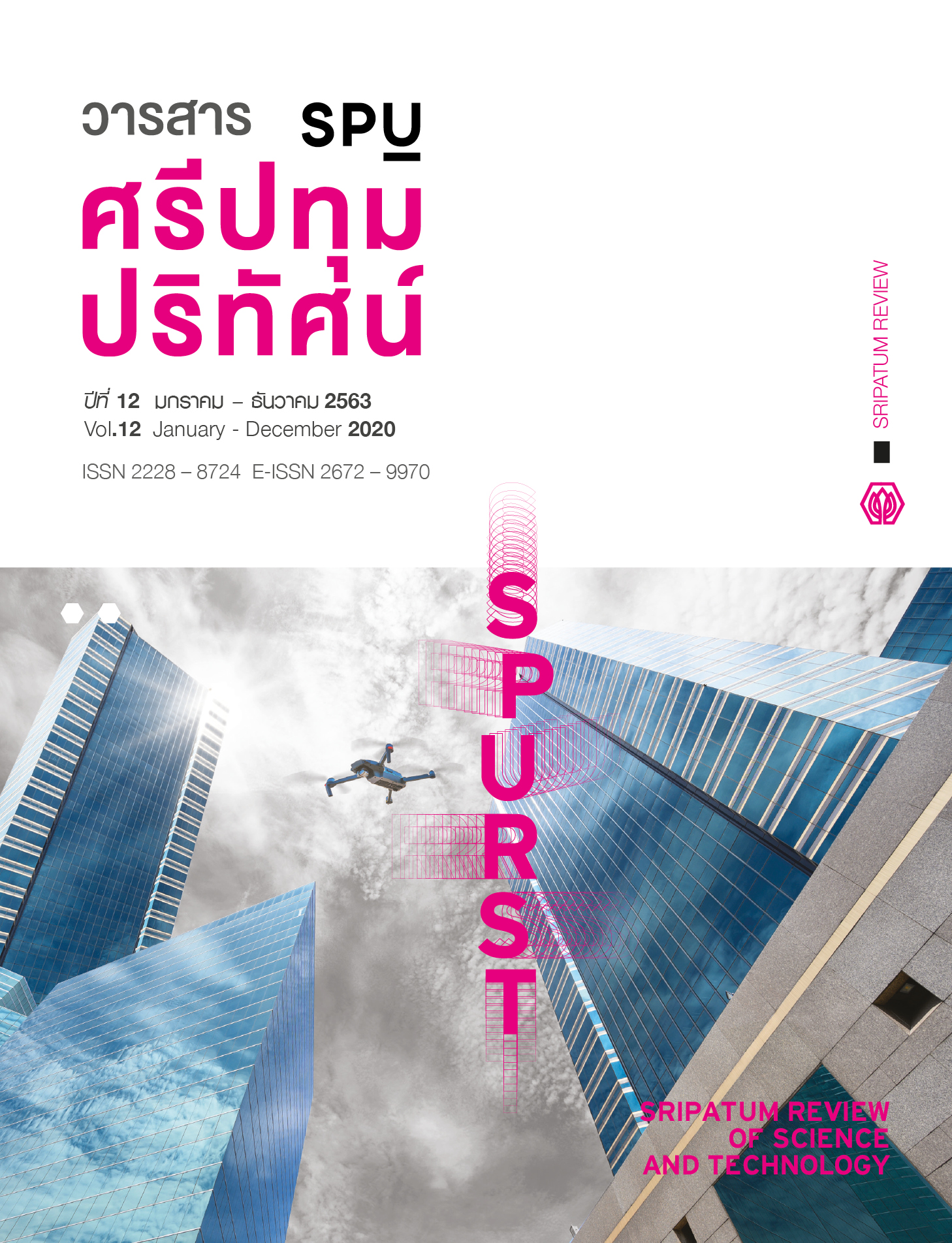การพัฒนาตัววัดและตัวชี้บอกระดับของการเป็นมหาวิทยาลัยราชภัฏดิจิทัลที่ สมาร์ตและมีความยั่งยืน (The Development of Metrics and Indicators of Level for Smart and Sustainable Digital Rajabhat Universities)
Main Article Content
บทคัดย่อ
การวิจัยนี้มีวัตถุประสงค์เพื่อพัฒนาตัววัดและตัวชี้บอกระดับของการเป็นมหาวิทยาลัยราชภัฏดิจิทัลที่สมาร์ตและมีความยั่งยืน เป็นการวิจัยเชิงปริมาณใช้แบบสอบถามปลายปิด มีขั้นตอนในการวิจัย 4 ขั้นตอน ดังนี้ ขั้นตอนที่ 1 ใช้กลุ่มตัวอย่างที่เป็นกลุ่มอาจารย์ ผู้บริหาร ของมหาวิทยาลัยราชภัฏในประเทศไทยจำนวนทั้งหมด 38 แห่ง ในการหาตัววัดและตัวชี้บอกด้วยการทดสอบค่าที เพื่อคัดเลือกตัวชี้บอกที่เหมาะสม จะคัดเลือกตัวชี้บอกที่มีค่าเฉลี่ยมากกว่า 3.50 ขึ้นไป ขั้นตอนที่ 2 ใช้กลุ่มตัวอย่างที่เป็นผู้ประเมินคุณภาพการศึกษาภายในสถานศึกษา เพื่อยืนยันตัววัดและ ตัวชี้บอกด้วยการทดสอบค่าทีจะคัดเลือกตัวชี้บอก ขั้นตอนที่ 3 วิเคราะห์องค์ประกอบเชิงยืนยัน ค่าน้ำหนักองค์ประกอบมากกว่าหรือเท่ากับ .30 และขั้นตอนที่ 4 ทดสอบความสอดคล้องกลมกลืนกับข้อมูลเชิงประจักษ์ ผลการวิจัยพบว่า ได้ตัววัด จำนวน 5 ตัว และตัวชี้บอก จำนวน 25 ตัว
Article Details
References
Charmondusit, K. (2019). The paradigm shift in organizational management of higher education institutions to accommodate changes in the 21st century. [Online]. Retrieved December 5, 2019, from: https://old.mahidol.ac.th/th/latest_news58/ Sustainable-University/sus-u.pdf. (in Thai)
Deloitte. (2018). Digital Maturity Model Achieving digital maturity to drive growth. [Online]. Retrieved March 23, 2020, from: https://www2.deloitte.com/content/dam/Deloitte/global /Documents/Technology-Media-Telecommunications/deloitte-digital-maturity-model.pdf
International Telecommunication Union. (2016). The ICT Development Index (IDI): conceptual framework and methodology. [Online]. Retrieved March 23, 2020, from: https://www.itu.int/en/ITU-D/Statistics/Pages/publications/mis/methodology.aspx
Kanok, O. (2013). A Development of ICT Competency Indicator Model for Faculty Member in Institute of Physical Education Thailand. Thesis of the Degree of Doctor of Philosophy Program in Information Technology. Bangkok: Sripatum University. (in Thai)
Kidjaideaw, S., Praneetpolgrang, P. and Jirawichitchai, N. (2017). Developing Standards framework of Measurement and Indicator for Smart Rajabhat Universities in Thailand. The Proceedings of the 9th National Conference on Information Technology, 1-2 November 2017 at Mahidol University (Salaya Campus), 348-353. (in Thai)
Madakam, S. and Ramaswamy, R. (2014). Smart Cities - Six Dimensions. The Proceedings of the International Conference on Advances in Computing and Information Technology, 4-5 January 2014 at Bangkok Thailand, 38-41.
Olsina, L., Dieser, A. and Covella, G. (2014). Metrics and Indicators as Key Organizational Assets for ICT Security. Emerging Trends in ICT Security, 2014, 25-44.
Orlowski, A. and Romanowska, P. (2019). Smart Cities Concept: Smart Mobility Indicator. Cybernetics and Systems, 1–13.
Pinyo, T. (2012). Composition analysis techniques for research. Bangkok: Fern,kalaung Printing and Publishing. (in Thai)
Pressman, R. S., and Maxim, B. (2014). Software Engineering: A Practitioner's Approach (8th ed.). New York: McGraw-Hill.
Poovarawan, Y. (2016). Grand Challenges in Digital University. Suranaree Journal of Social Science, 10(2), 171-188. (in Thai)
Smyth, K., MacNeill, S. and Johnston, B. (2015). Visioning the Digital University – from institutional strategy to academic practice. Educational Developments, 16(2), 13-17.
Thongiam, B., (2018). The Development of Indicators for Digital Literacy Skills of Teacher Students in Unlimited Admission University. Journal of Suvarnabhumi Institute of Technology (Humanities and Social Sciences), 4(1), 291 – 302. (in Thai)
Tikhomirov, V. (2015). Development of strategy for smart University. The Proceedings of Open Education Global International Conference 2015, 22-24 April 2015 at Alberta Canada, 434–436.
Yamane, T. (1973). Statistics: An Introductory Analysis. (3rd ed). New York: Harper & Row.

